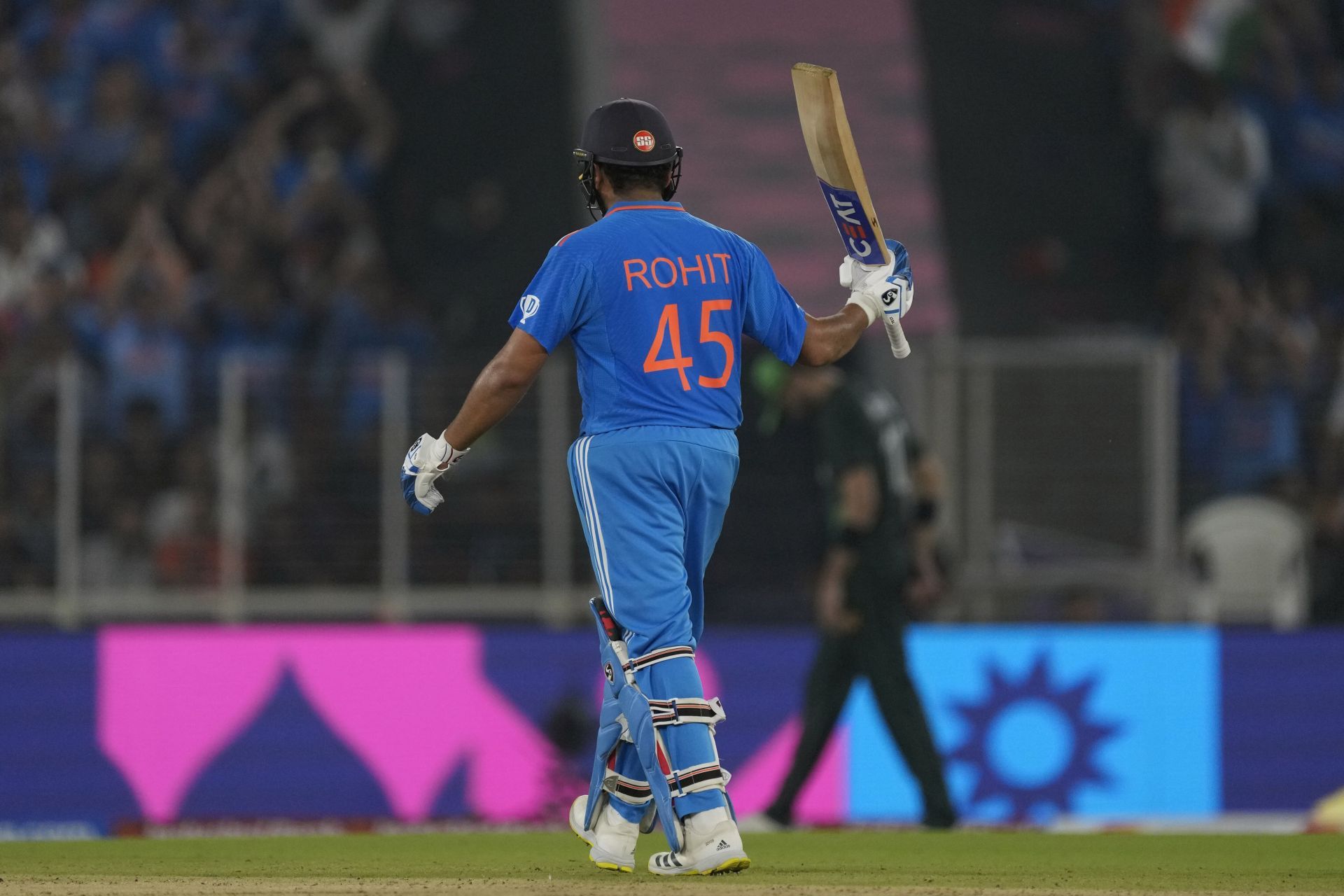
Four years on, Rohit Sharma is still India's point-of-difference batter
Even before a ball had been bowled at this World Cup, there were more than a million (perhaps a billion) eyeballs trained on Rohit Sharma, and how he would lead India at a home World Cup. India had won the World Cup when it was last co-hosted on these shores in 2011, and if that was not enough, they are currently on a 10-year trophy-less streak at ICC events.
So much so that Rohit’s batting flew under the radar. No one is saying that he is past his prime or anything of that sort. But when the weight of the country was on his captaincy shoulders, his batting was consigned to the back seat, and probably slightly hidden from the glare of those watching.
Rohit Sharma has been sparkling form in the World Cup
Three games into the World Cup, Rohit has reiterated that while his captaincy is important and possibly decisive in where India finishes, his batting is just as paramount. If anything, a little more vital, and that says everything you need to know about his ability as a match-winner.
Rohit, like several sportspersons before him (and after him) has had to tweak his game a little. He can still score the daddy hundreds that made him a darling of the nation once. But he has often resorted to attacking a lot earlier, largely because he now has Shubman Gill alongside him, who is perfectly capable of doing what Rohit once did.
This is particularly pertinent because India’s batting dynamic has changed, if we compare it to the late 2010s. Back then, they had MS Dhoni in the middle order – a master of the death overs. Hardik Pandya, his heir apparent and capable of finding the fence from the outset, and Kedar Jadhav, who in his prime, hit the ball in unorthodox areas and scored at a brisk pace.
So, India and Rohit could afford to start off slightly sluggishly. One, because Rohit himself could make up quite easily. Second, they had the firepower to offset a relatively slow start, even if India’s current captain fell early.
In the current circumstances, all of India’s batters (at least those part of their first-choice XIs in the first three games) require time to get going. Pandya likes to milk the bowling before teeing off, as does Ravindra Jadeja. KL Rahul and Shreyas Iyer, too, take their time. Suryakumar Yadav is the only anomaly but India cannot find a place for him in their side.
That, coupled with how ODI cricket has evolved, necessitates India to go harder earlier – a burden that Rohit has taken on, and excelled in. It has, of course, come at the cost of hundreds – he only has three of them since the start of 2020, and went through a three-year barren spell where he did not cross the three-figure mark even once (between January 20, 2020, and January 23, 2023).
But his strike rate has zinged up during that time. In 2020 and 2021, he played three ODIs apiece, meaning that there is not much sense to look into such a short sample space. In 2022, he rattled along at 114.22 and averaged more than 41. The average might not be as high as it was between 2017-19, but that was down to his increased risk-taking, rather than a blemish on his batting pedigree.
This year, the average is back up, 54.68 to be precise and he is striking at more than 116. 19 ODIs is a decent sample space too, indicating that he might have finally found the mix that allows him to keep scoring rapidly, while also putting up substantial scores.
If you were to talk in century terms, Gill has a better record than Rohit in recent times. Virat Kohli, too, has been a prolific run-scorer in this format in the last year or so. Rahul and Shreyas have not fared badly either.
But again, what makes Rohit stand out, and India’s point-of-difference batter is the way he bats at the top. The risk-taking, even if it comes at the cost of consistency, sets teams back and meddles with their plans. It tells them that India intend to dominate and that the slightest of errors will be punished disdainfully. And as cliched as it sounds, it sets the tone for what is to follow.
Afghanistan and Pakistan have already been on the wrong end of it at the World Cup, and it feels they might not be the last.
The other major upturn is that if Rohit bats for any significant period of time (even for 20-25 overs), he will have put India in a commanding position, possibly going for a score well in excess of 350 when batting first. When batting first, he would have broken the back of the run-chase, thereby allowing the others to knock the ball around and get the job done.
This is, of course, in contrast to what he did when he was plundering all those hundreds. As the game has evolved, though, and as India have required a different skill set, their skipper has been the one to put his hand up and has been willing to sacrifice personal numbers for his team’s gain – a true hallmark of any leader.
It is a testament to his quality that four years on from that record-breaking 2019 World Cup, he is still India’s point-of-difference batter, despite taking on a largely different role. And if India are to go a couple of steps further this time, you can bet your bottom dollar Rohit will have played a pivotal part.
Maybe not by scoring as many hundreds. But by being decisive in short, sharp bursts. As much as centuries help teams win games, it is the latter that might ultimately win tournaments.